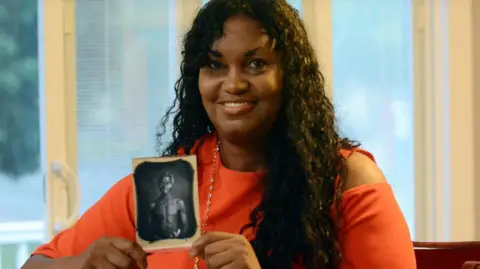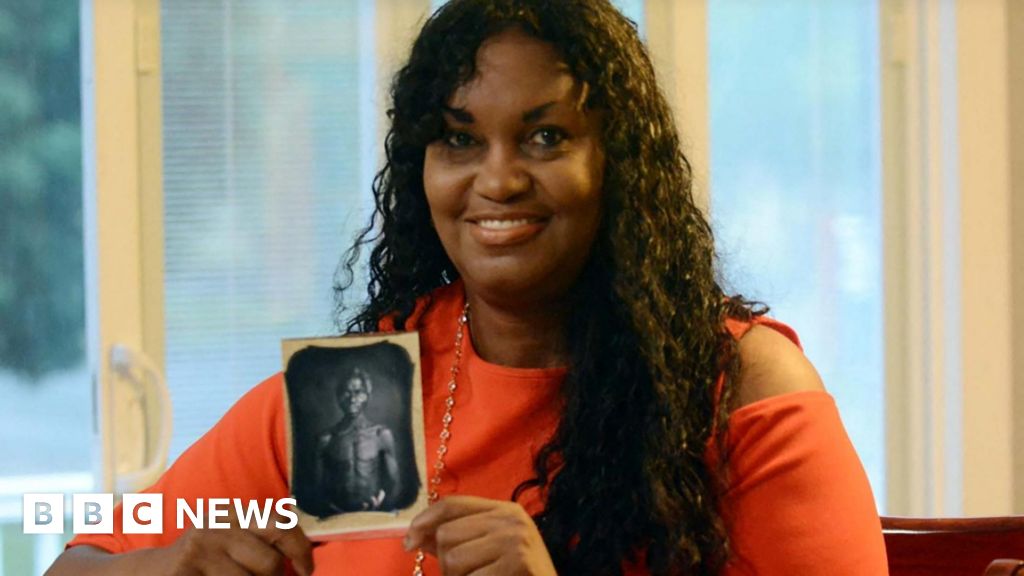BBC News
 Reuters
ReutersHarvard University has agreed to hand over a set of historic photos believed to be among the earliest depicting enslaved people in the United States.
The agreement ends a long legal battle between the institution and Tamara Lanier, an author from Connecticut who argues she is a descendant of two people shown in the photos.
The images, taken in 1850, will be transferred to the International African American Museum in South Carolina, where the people shown in the photos were enslaved.
Harvard said it had always hoped the photos would be given to another museum. Ms Lanier said she was “ecstatic” with the result.
The images are daguerreotypes, a very early form of modern-day photographs and were taken 15 years before the 13th Amendment to the US Constitution abolished slavery.
The photos were rediscovered in storage at Harvard’s Peabody Museum of Archaeology and Ethnology in 1976.
The 15 images feature people identified by the Peabody Museum as Alfred, Delia, Drana, Fassena, Jack, Jem, and Renty. According to Ms Lanier, the settlement would mean the transfer of all the images not just the ones about Renty and Delia.
The photos were commissioned by Harvard professor and zoologist Louis Agassizm as part of discredited research to prove the superiority of white people. He espoused polygenism, a now debunked belief that human races evolved separately.
The case formed part of public debate around how America’s universities should respond to their historic links to slavery. In 2016, Harvard Law School agreed to change a shield that was based on the crest of an 18th Century slaveholder.
Harvard did not comment on the details of the settlement but a university spokesperson said it “has long been eager to place the Zealy Daguerreotypes with another museum or other public institution to put them in the appropriate context and increase access to them for all Americans.”
The spokesperson added that Ms Lanier’s “claim to ownership of the daguerreotypes created a complex situation, especially because Harvard has not been able to confirm that Ms Lanier is related to the individuals in the daguerreotypes.”
 Getty Images
Getty ImagesMs Lanier sued Harvard in 2019, arguing the images were taken without consent and accusing the university of profiting from them through large licensing fees.
In 2022, the Massachusetts Supreme Judicial Court upheld an earlier ruling that dismissed Ms Lanier’s claim to ownership. She was, however, allowed to claim damages for emotional distress. It ruled Harvard had “complicity” in the “horrific actions” surrounding the creation of the images.
“Harvard’s present obligations cannot be divorced from its past abuses,” it added.
Ms Lanier told the BBC, she was “ecstatic” about the settlement. “I have always known first of all that I could never care for the daguerreotypes at the level they would require,” she said.
“There are so many ties that bind Renty and Delia and the other enslaved people to that particular part of South Carolina that to repatriate them there would be like a homecoming ceremony.”
The South Carolina museum helped Ms Lanier with her genealogy claims but was not involved in the legal battle. Its president said they intend to hold and display the images “in context with truth and empathy.”
“These are not gentle images and the story behind how they came to be is even more difficult to hear,” Tonya Matthews told the BBC.
“So to be in a space that has already created room for conversations about the inhumanity of slavery and enslavement and how far those implications echo even to today is what we do and it’s our mission.”



